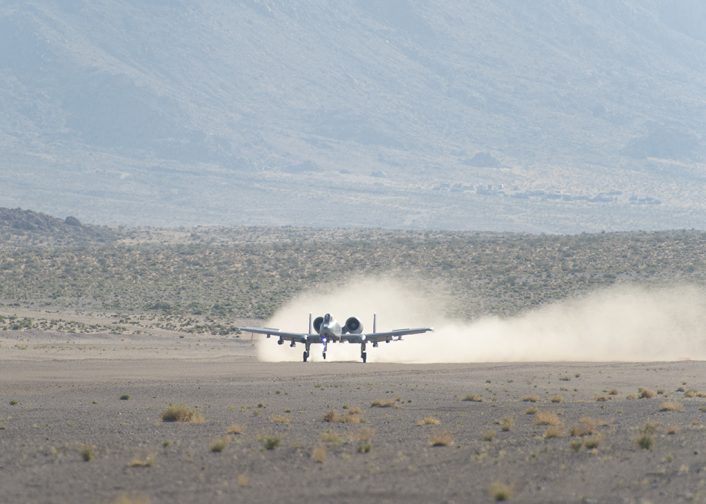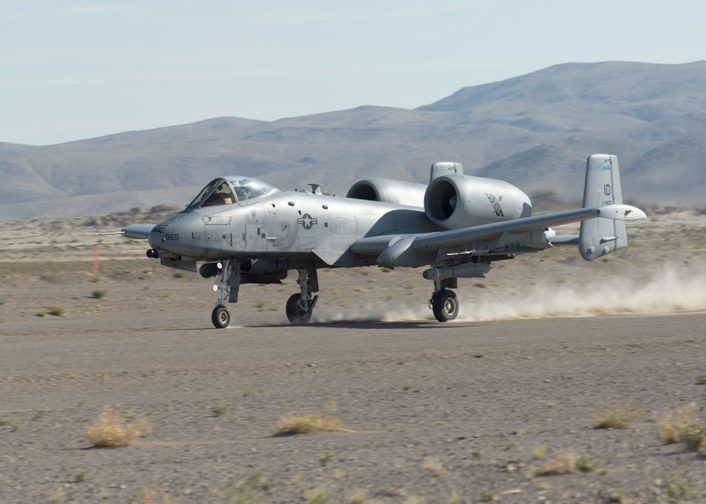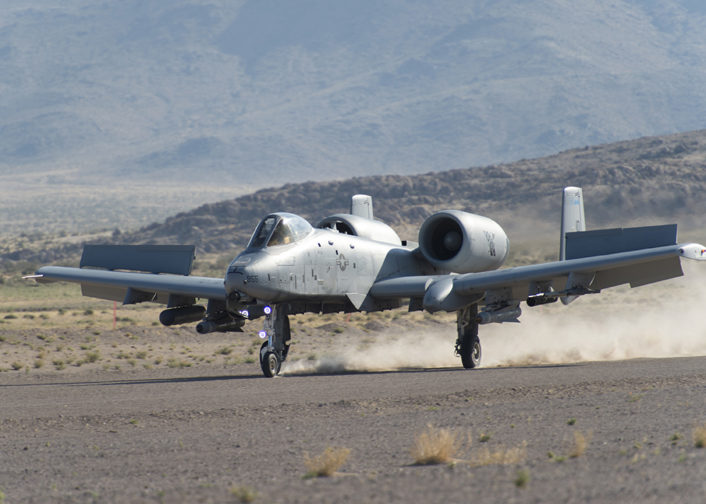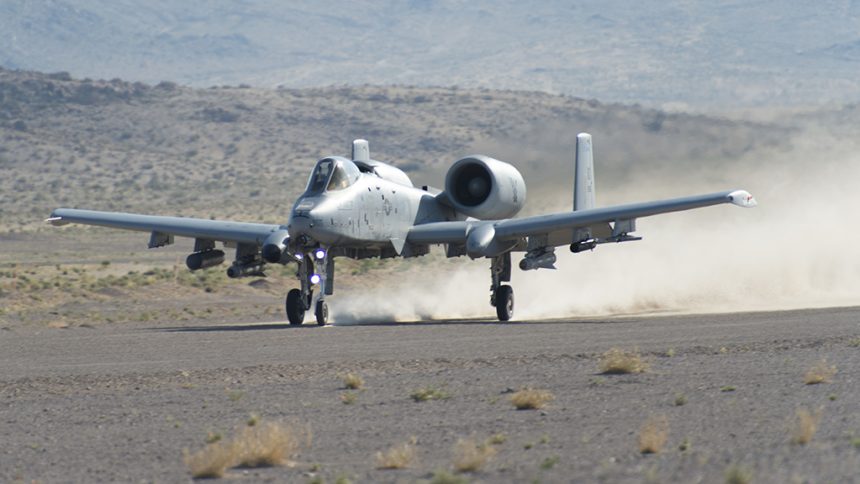The “Warthog” has the phenomenal ability to use unimproved surface landing strips. And Idaho ANG A-10 pilots regularly train to exploit it.
A-10C Thunderbolt II from the 190th Fighter Squadron at Gowen Field, Idaho, have carried out austere landings on the Freedom Landing Strip, June 6, 2019, at the National Training Center, Fort Irwin, California.
The IDANG aircraft are participating in Green Flag-West 19-08 from Nellis Air Force Base, with flying operations at the NTC in support of the 116th Cavalry Brigade Combat Team from the Idaho Army National Guard. Warthog pilots from the 190th FS regularly train to perform landings during both day and night sorties to qualify on the unique ability of the A-10 to use unimproved surface landing strips: A-10 Thunderbolts belonging to all the U.S. Air Force units perform this kind of training, usually with support of Special Tactics Squadrons that provide air traffic control at the landing strip.

This kind of training is used to validate procedures used when operations occur from within a denied territory, where there is no established landing zone under friendly control.


Thanks to its engines mounted far from the surface of the runway, the A-10 attack aircraft is practically immune to FOD (Foreign Object Damage) caused by debris flying up from unprepared runways. For this reason, the Warthog (one of the most popular A-10 nicknames) often practice austere landing and take off operations, both in the U.S. and when they are deployed to eastern Europe, a theater that is also scattered with highway strips as well as abandoned Warsaw Pact military airfields, which have not been in use since the Cold War, that are perfectly suited for such kind of training.









